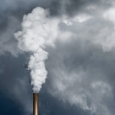Environmental Protection
Commentary
Cry Wolf Quotes
When the City Council was considering the right-to-know law, lobbying was intense. Those opposed to it argued that the tough regulations would drive businesses from the city. That threatened exodus has not happened.
We do not believe that merely furnishing a list of the ingredients of our products to the general public will enable the general public will enable the general public to intelligently decide which, if any, are liable to endanger the environment. What such a list can and will do, is enable our competitors to learn something about the nature of our products. With competition in the market place as it is today, we certainly do not need the City Council to help our out-of-town competitors.
To expect well over half a million small businesses to adhere to these extensive requirements would be regulatory overkill.
Over the past ten months, the RGGI Cap & Trade scheme has been exposed as nothing less than a devious and deceptive tax. This is a program that has been stained by secrecy and open to exploitation by speculators looking to profiteer on the backs of ratepayers all while driving up electricity rates and contributing to the continued exodus of jobs and industry from our state.
Related Laws and Rules
- American Clean Energy and Security Act
- American Power Act of 2010
- Clean Air Act
- Clean Air Act of 1970
- Clean Air Act of 1977
- Clean Air Act of 1990
- Clean Energy Jobs and American Power Act
- Clean Water Act
- Emergency Planning and Community Right-to-Know Act of 1986
- Environmental Protection Agency
- New Jersey Worker and Community Right-To-Know Act
- Philadelphia Worker and Community Right-to-Know Act
Evidence
-
Blind Spot: The Big Three's Attack on the Global Warming Treaty
eleased during the controversy over the Kyoto Treaty, this study is a serious policy paper, exploring the intersections between transit policy and global warming. It fairly establishes the Big Three have as long history of stubborn obstructionism. (They don't like anyone telling them what to do.)
-
Reducing Carcinogens in Public Schools: A non-regulatory approach by a regulatory agency
Using the New Jersey Right to Know law, advocates were able to find 318 public school districts in their state that used or held a list of 10 known carcinogens, including arsenic, benezene, vinyl chloride, and lead chromate. The study documents how these substances are used and who is exposed to them. The authors then show that the schools disposed of the toxics, or used them all up and did not order replacements.
-
EPA: “Benefits and Costs of the Clean Air Act: Second Prospective Study—1990-2020”
Clean Air Act benefits total more than $2 trillion.
-
The Going-Out-Of-Business Myth
OMB Watch debunks the cry wolf claims made against specific regulations, in chart form.
-
Jobs vs. The Environment: An Industry-Level Study
Four industries that operate under intense environmental regulatory scrutiny, but haven't lost jobs as a result.
Resources
Political Economy Research Institute is a think tank focused on a variety of subjects such as diverse financial regulation, living wages and environmental protection.
Green for All is a leading environmental oranization focused on creating green jobs for low-income communities and people of color.
The Sierra Club is America’s oldest (founded in 1892), and largest, environmental non-profit.





